From George Ure's incredible economics site Urban Survival.. http://urbansurvival.com/week.htm
First Hybrid Flu Death
First, an update from a pretty good source about what's 'hot' on the flu front this morning:
"1) A 23 month old in Texas died. Seems to not fit the pattern, but no details released to public yet, so I don’t know if this is an anomaly or something is different than normal about the swine flu. Based on normal flu years, about 5-15% of US deaths are healthy young adults that don’t fit the pattern. This may be the same hard to figure out death pattern, or something may have changed in the way the H1N1 is behaving. We’ll know more as details are released.
2) Patient zero (or very near to zero) was apparently identified. Young boy who was sick in early March. His blood was tested then & they found nothing, since they weren’t looking for swine flu. Retested & apparently positive. His parents did not get sick, nor others in the village; at least sick enough to have seen a doctor & had blood-work done. They live right next to a big pig-plant (locations in Mexico & US). They, of course, say that the swine flu has nothing to do with them & their pigs don’t have influenza. I’m sure the Mexican health agencies will do more than take their word & look into it."
Meantime, maybe someone was actually paying attention yesterday when I bemoaned the lack of precision when it comes to the hybrid flu that's making the rounds. Not only is the World Health Organization calling this outbreak the 'North American Flu' but I see where "U.S. officials want 'swine' out of flu name" as well.
I continue to be perplexed by a couple of points: The first is "Where the treatment protocol?" and the second is "What are the over-the-counter/OTC options?" for the millions of Americans who either don't have healthcare, or figure they would face more risk by going to a hospital than by self medicating and staying at home.
One the question of treatment protocols, it turns out that they really do exist...well...sort of.
For example, a quick search of pandemic flu treatment protocols brings up a US Department of Transportation study "Preparing for Pandemic Influenza" but it's focus is not on the doctor/PA level practitioner trying to respond to a sick patient, so much as it's a guide for 9-1-1 centers
to develop dispatch protocols for Personnel and Public Safety Answering Points (PSAPs).
Similarly, the Homeland Security "Best Practices and Model Protocols" document of April 2007 does a fine job of sorting out who should respond how at an agency/sector level but darned if it gets into the diagnostic tree and efficacy studies.
I haven't had time to do an exhaustive search, but after spending a fit of time on the phone with a doc I know, his point that the practitioner-level/treatment recommendations really ought to be more readily available. His view went something like this: "OK, so I have someone show up in my office and they've got a 102 degree temp, they're barfing their guts out, sniffling and hacking...what's the current best course for proper diagnosis and treatment based on the most current cases which CDC and WHO have in this episode?"
To be sure, the WHO has some generalized information on their web site if you scroll to "Treatment and Prophylaxis: Antiviral Agents, but it's not a detailed diagnostic flow chart by any stretch. What this particular doc is looking for is the whole tree, contraindications and a drug-by-drug summary. You know, the kind of thing that would say use this antiviral but only if the patient doesn't have the following conditions, kind of thing, along with a batting average or best SWAG based on these similar modeled responses.
Would you be happy with the flu response plan for Tonga down in the South Pacific? That's easier to come by. But enough of that...on to the next point.
How this flu kills is interesting. Seems that it triggers an over-reaction by the body's immune system in a process called cytokine storming. Here's a contributed article by Spencer Feldman, this is NOT PRESENTED AS MEDICAL ADVICE AND IS FOR DISCUSSION PURPOSES ONLY and remember as you read this, that it was prepared for bird flu not the hybrid which is currently in play. That said, it may offer some perspectives on how the flu operates and let me say this one more time: THIS IS NOT MEDICAL ADVICE - FOR THAT SEE YOUR DOCTOR! Got it? :
Suggestions for the Acute Management of a H5N1 Pandemic, by Spencer Feldman
The H5N1 (Asian Avian Flu or "Bird Flu") virus owes its lethality to its ability to instigate pathological immune responses in the host via cytokine storm. This leads to disseminated intravascular coagulation (DIC) and massive infiltration of inflammatory cells into the lungs. Thus, any H5N1 protocol must take into consideration, not only the inhibition of the virus, but also the effects of DIC and alveolar flooding.
Given that there are reports of some patients dying within three hours of initial symptoms, any medical response must be swift and aggressive. Traditional models for treatment outside of a hospital setting rely upon antiviral medications. This is insufficient as there are now strains of the H5N1 that are resistant to all major antiviral drugs, and furthermore does nothing to address the issues of DIC and alveolar flooding.
Alternative models concentrate on immune stimulating products. This is a dangerous idea as it is the strength of the immune response that makes the H5N1 so deadly. Increasing immune response may prevent an initial infection, but in an infection that has already taken hold, it will only worsen the outcome.
Preventative Measures: Studies suggest that Vitamin E and Selenium may decrease the infectivity and pathogenicity of the H5N1 Avian Influenza(1).
Additionally, air pollutants have shown to increase the risk of contracting the H5N1 Avian Influenza(2). Raising glutathione, a primary detoxification pathway for petrochemicals may be of benefit. Finally, strengthening capillary walls may be suggested in preparation for a possible hemorrhagic episode.
Acute Management: Current scientific thought holds that the lethality of the H5N1 Avian Influenza may be caused by systemic viral dissemination, cytokine storm and/or alveolar flooding(3). As such, an intelligent protocol for supporting the body would be to take these factors into consideration. The H5N1 Avian Influenza contains the compounds Hemagglutinin and Neuraminidase (also called sialidase). Both of these compounds are required in the infection cycle of certain virus. The drugs Zanamivir and Oseltamivir (Tamiflu) are both Neuraminidase inhibitors.
One study suggests that the common Chinese Herb Astragalus may also be a Neuraminidase inhibitor(4). Since another study(5) suggests that Ca2+ and Mag2+ both speed up the activity of neuraminidase, and that Ca2+ is required for its function, making these elements unavailable via chelation with sodium and potassium citrate may be of use.
Studies also suggest that Lactoferrin(6), sulfated polysaccharides such as Ceramium Rubrum(7) (Red Marine Algae) and Elderberries(8) may be Hemagglutinin inhibitors. Unfortunately, Elderberry also increases cytokines (see above) especially Tumor Necrosis Factor alpha (TNFa)(9) which is specifically associated with the toxicity of the H5N1 Avian Influenza (10). For this reason, ingredients that studies suggest normalize TNFa such as Curcumin and Vitamin E (11),(12) should be considered.
One outcome of a cytokine storm can be disseminated intravascular coagulation (DIC). DIC may be responsible for the massive hemorrhaging seen with the H5N1 Avian Influenza(13). Thus, in addition to supporting normal cytokine levels, supporting the body in normalizing blood coagulation parameters with nutritional compounds may also be suggested(14),(15),(16). The drugs Amantadine and Rimantadine work by inhibiting the matrix protein(s). Studies indicate that Glutathione and Resveratrol may have an effect on matrix proteins as well(17), (18). Finally, Lactoferrin may support the body in decreasing infiltration into the lungs of inflammatory cells(19).
Emergency Solution While I have already manufactured a product that contains all of the ingredients listed, the FDA does not allow for commercial sale alternative products to be made (other than homeopathics) for the bird flu.
The following ingredients should be available locally and might form the basis of a makeshift H5N1 survival pack.
1- Curry powder as a source of turmeric to suppress TNFa
2- Red wine with the alcohol boiled off as a source of resveratrol
3- Kelp as a hemagglutinin inhibitor
4- Astragalus as a neuraminidase inhibitor (available at any Chinese herb shop)
5- Vitamin E as a blood thinner (available at any health food store) Conclusions
Reports of people dying from the H5N1 Influenza in as little as three hours from the first signs of infection suggest the necessity of carrying on one’s person whatever they consider an adequate defense against this infection.
To recap, In designing such a defense, the key factors to address regarding the H5N1 virus would be:
1- Decreasing the risk of initial infection
2- Decreasing the potential virulence of infection
3- Inhibiting Hemagglutinin
4- Inhibiting Neuraminidase
5- Inhibiting Matrix proteins
6- Binding of viral receptor sites
6- Reduction of calcium and magnesium
7- Decreasing general inflammatory cytokines
8- Decreasing TNF-a in particular
9- Supporting normal platelet activity
10- Decreasing free radical activity in the lungs
11- Minimizing hemorrhage
12- Strengthening blood vessels
13- Protecting against the after effect of hemorrhage
14- Replenishing electrolytes lost to diarrhea
15- Inhibiting secondary infections
Again, THIS IS NOT MEDICAL ADVICE AND IS OFFERED ONLY FOR INFORMATION. FOR MEDICAL ADVICE SEE YOUR DOCTOR.
High school principal investigated for allegedly allowing a former student
who was homeless to attend classes and eat at the school cafeteria. Guess
if he'll still be the principal for much longer [Awkward]
-
[image: Awkward] [link] [15 comments]
46 minutes ago














































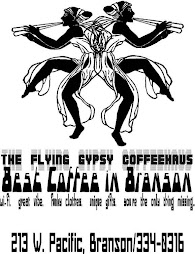








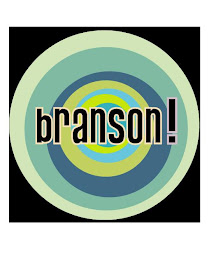



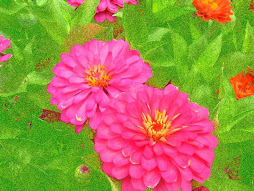




















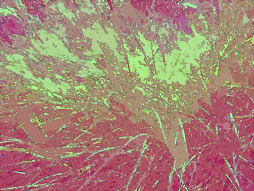
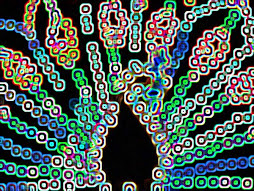

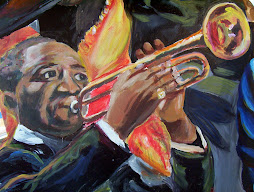










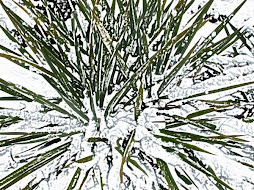






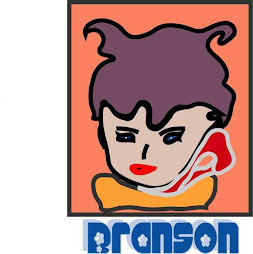



No comments:
Post a Comment